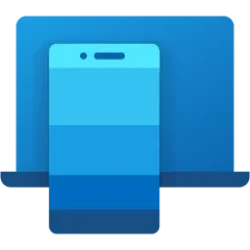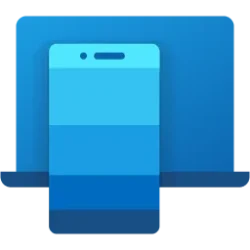This tutorial will show you how to see how much storage space on the Windows "C" drive is currently being used by Recall snapshots for you account in Windows 11.
Starting with Windows 11 build 26120.2415 (Dev) and build 26100.3902 (RP) on Snapdragon-powered Copilot+ PCs, you can try out the Recall (Preview) feature.
Starting with Windows 11 build 26120.2510 (Dev), Microsoft is expanding the preview of Recall to Windows Insiders on AMD and Intel-powered Copilot+ PCs.
Recall was introduced earlier this year, with the ability to enable you to quickly find and jump back into what you have seen before on your PC. You can use an explorable timeline to find the content you remember seeing before. You can also use semantic powered search and just describe how you remember something and Recall will retrieve the moment you saw it. Any photo, link, or message can be a fresh point to continue from.
To use Recall you need to opt in to saving snapshots, which are screenshots of your activity. Snapshots and the contextual information derived from them are saved and encrypted to your local hard drive. Recall does not share snapshots or associated data with Microsoft or third parties, nor is it shared between different Windows users on the same device. Windows will ask for your permission before saving snapshots. You are always in control, and you can delete snapshots, pause or turn them off at any time. Any future options for the user to share data will require fully informed explicit action by the user.
To help maintain your privacy, Recall processes your content locally on the Copilot+ PC and securely stores it only on your device. Snapshots are encrypted by Device Encryption or BitLocker, which are enabled by default on Windows 11. Recall doesn't share snapshots with other users that are signed into Windows on the same device. Microsoft can't access or view the snapshots.
You're always in control of what's saved as a snapshot. You can disable saving snapshots, pause temporarily, filter apps and websites, and delete your snapshots at any time.
You can choose how long snapshots can be saved on your device. In the Maximum storage duration for snapshots setting, select either 30, 60, 90, 180 days, or unlimited. Once snapshots reach the age limit, they are deleted from the device. If you don’t set the maximum storage duration, then snapshots aren’t deleted until the Maximum storage for snapshots limit is reached, and then the oldest snapshots are deleted first.
You can configure how much maximum disk space Recall is allowed to use to store snapshots. When you reach this limit, your oldest snapshots will be automatically deleted to make room for new ones.
Starting with Windows 11 build 26100.3915 (24H2), You work across so many apps, sites, and documents it can be hard to remember where you saw something you want to get back to. Recall (preview) saves you time by offering an entirely new way to search for things you’ve seen or done on your PC securely. With the AI capabilities of Copilot+ PCs, it’s now possible to quickly find and get back to any app, website, image, or document just by describing its content. To use Recall, you will need to opt-in to save snapshots, which are images of your activity, and enroll in Windows Hello to confirm your presence so only you can access your snapshots. You are always in control of what snapshots are saved and can pause saving snapshots at any time. As you use your Copilot+ PC throughout the day working on documents or presentations, taking video calls, and context switching across activities, Recall will take regular snapshots and help you find things faster and easier. When you need to find or get back to something you’ve done previously, open Recall and authenticate with Windows Hello. When you’ve found what you were looking for, you can reopen the application, website, or document, or use Click to Do to act on any image or text in the snapshot you found.
References:
Retrace your steps with Recall - Microsoft Support
Manage your Recall snapshots and disk space - Microsoft Support
Privacy and control over your Recall experience - Microsoft Support
Contents
- Option One: See Storage Space Used by Recall Snapshots in "Recall & snapshots" Settings
- Option Two: See Storage Space Used by Recall Snapshots in "Storage" Settings
1 Open Settings (Win+I).
2 Click/tap on Privacy & security on the left side, and click/tap on Recall & snapshots on the right side under "Windows permissions". (see screenshot below)
3 Under Snapshots, you will see the Storage size (ex: "33.9 MB") currently used by your snapshots. (see screenshot below)
1 Open Settings (Win+I).
2 Click/tap on System on the left side, and click/tap on Storage on the right side. (see screenshot below)
3 Under Local Disk (C:) at the top, you will see the current storage size (ex: "34.2 MB") used by your Snapshots. (see screenshot below)
It may take a moment for the storage sizes to refresh and populate.
That's it,
Shawn Brink
Related Tutorials
- View Storage Usage of Drive in Windows 11
- Enable or Disable Recall Feature in Windows 11
- Uninstall or Reinstall Recall in Windows 11
- Enable or Disable Recall Snapshots in Windows 11
- Use Recall with Snapshots in Windows 11
- Change Maximum Storage Size for Recall Snapshots in Windows 11
- Change Maximum Storage Duration for Recall Snapshots in Windows 11
- Delete Recall Snapshots in Windows 11
Last edited:












